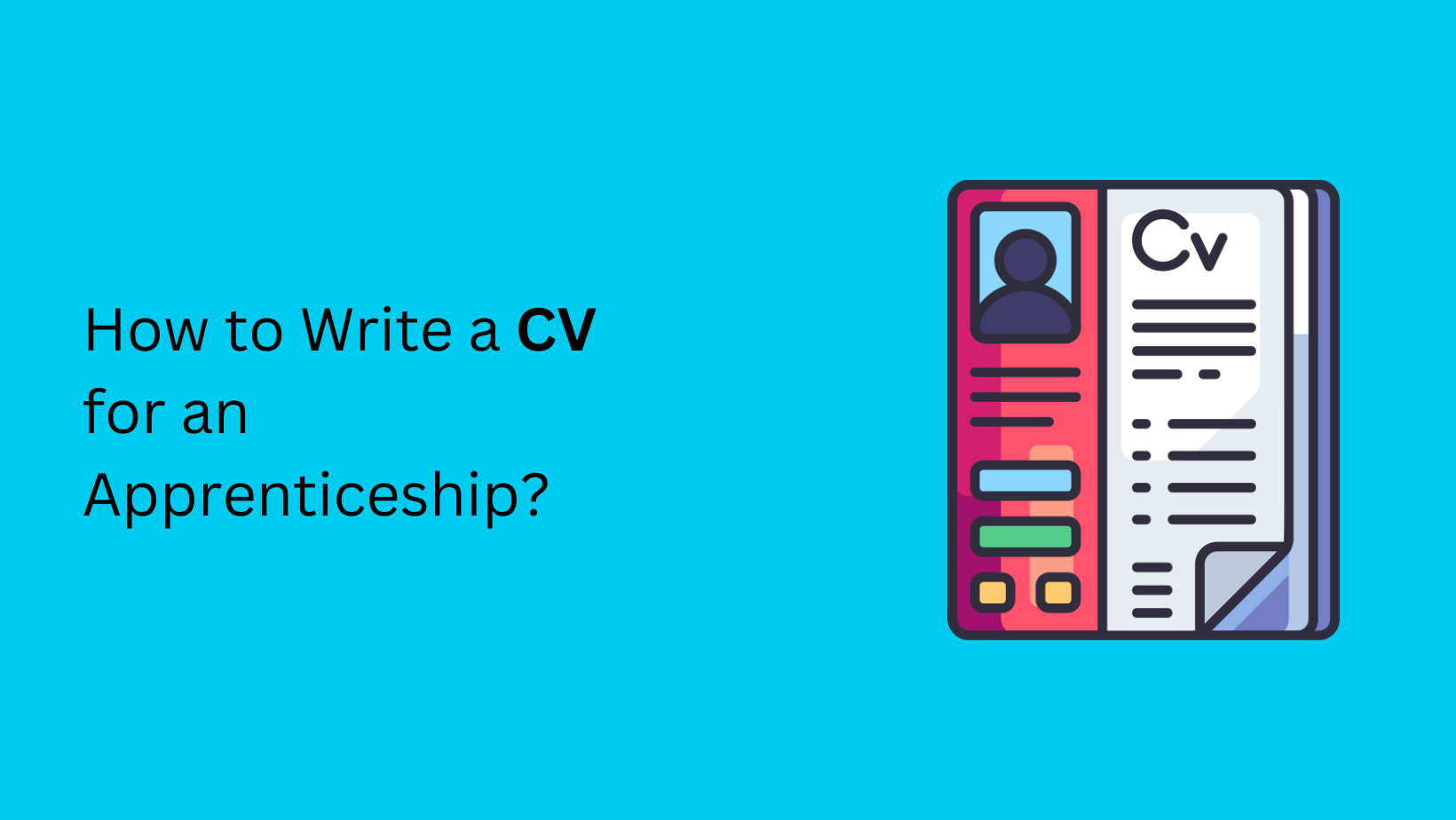Apprenticeships are an excellent way to gain practical skills and knowledge while earning a wage. However, you may wonder, “How to write a CV for an apprenticeship?
When embarking on the exciting journey of securing an apprenticeship, one of the first steps is to create a well-structured and informative CV. Your CV is a key tool to showcase your skills, experiences, and enthusiasm to potential employers.
This article will walk you through the essential components of creating a standout CV explicitly tailored for an apprenticeship opportunity.

1. Contact Information
Begin your CV with your full name, phone number, email address, and location (city or town). Make sure your contact details are up-to-date and professional.
2. Personal Statement
Write a brief and impactful personal statement summarising your key attributes, career aspirations, and interest in the specific apprenticeship role. Keep it concise and enthusiastic, around 2-3 sentences.
Example: “Dedicated and motivated school leaver with a passion for mechanics. Seeking an apprenticeship in automotive engineering to apply hands-on skills, learn from experienced professionals, and contribute to the industry.”
3. Educational Background
List your academic qualifications chronologically, starting with the most recent. Include the school or college name, dates attended, and the qualifications achieved, such as GCSEs, A-levels, or equivalents.
4. Relevant Skills
Highlight the skills that are relevant to the apprenticeship role. These could include technical skills, computer skills, communication skills, problem-solving abilities, and more. Use bullet points for clarity.
Example:
- Proficient in using hand tools and power tools
- Strong attention to detail for precise measurements
- Effective communicator and team player
5. Work Experience
Detail any relevant work experience you have, even if it’s not directly related to the apprenticeship. Highlight responsibilities, tasks, and accomplishments. If this is your first time working, emphasize any voluntary work, school projects, or extracurricular activities demonstrating relevant skills.
6. Achievements and Certifications
Include certificates, awards, or achievements showcasing your dedication and capabilities. This could be recognition for academic excellence, participation in competitions, or completion of relevant courses.
7. Hobbies and Interests
Briefly mention your hobbies and interests, especially if they demonstrate qualities that align with the apprenticeship, such as teamwork, problem-solving, or practical skills.
8. References
Provide the details of at least one professional reference, ideally a teacher, employer, or mentor who can vouch for your abilities and character. Make sure to seek their permission before listing them as a reference.
Formatting Tips:
- Keep the CV clean and easy to read, using a simple font (e.g., Arial, Calibri) and appropriate font size (10-12pt).
- Use bullet points for lists to make information more digestible.
- Use clear headings and subheadings to organize different sections.
Summary
Creating an effective CV for an apprenticeship is your chance to make a positive first impression on potential employers. Tailor your CV to the specific requirements of the apprenticeship, showcasing your enthusiasm, relevant skills, and commitment to learning. With a well-crafted CV, you’ll be one step closer to securing the apprenticeship opportunity that can kick-start your career journey.
